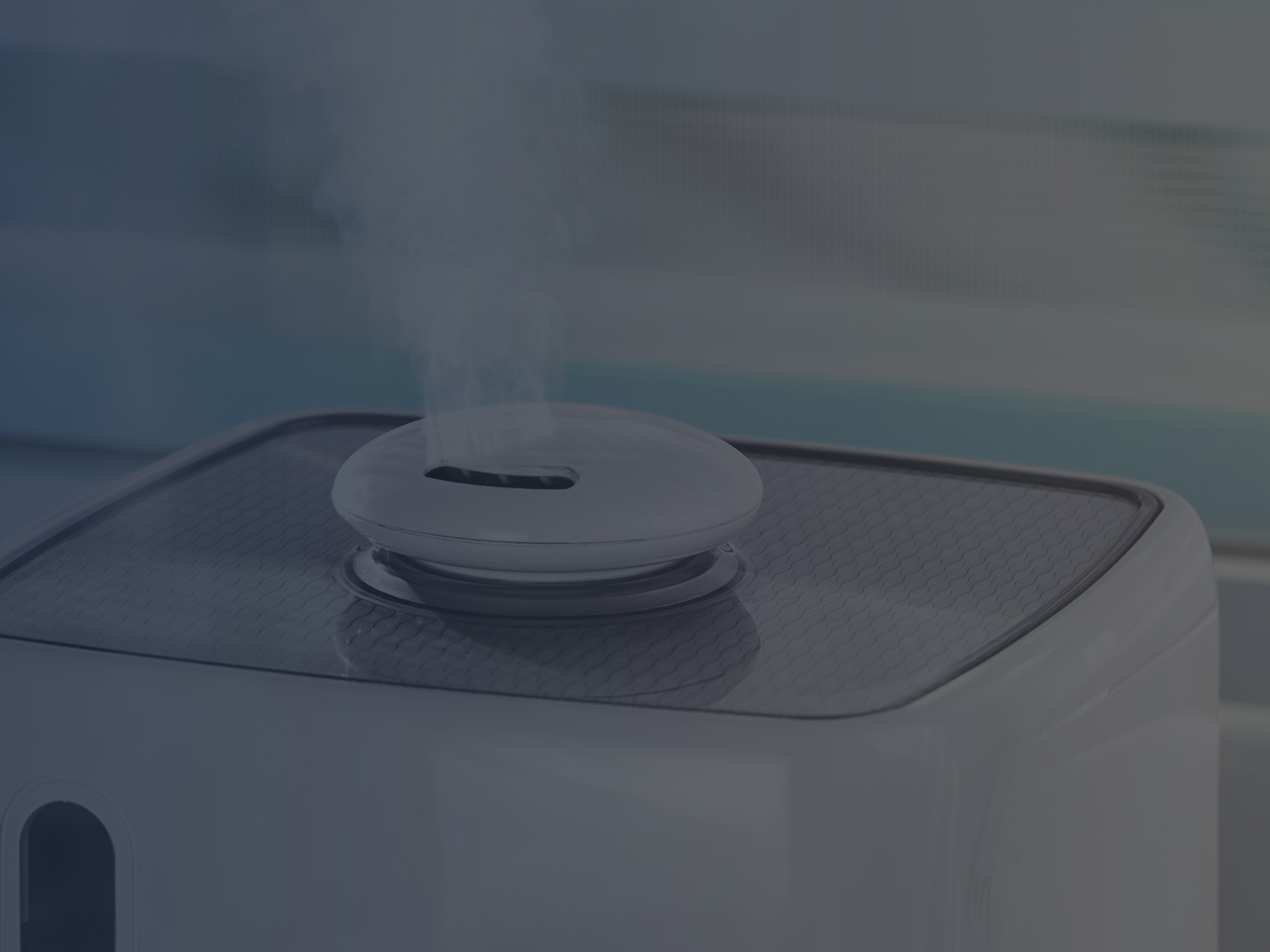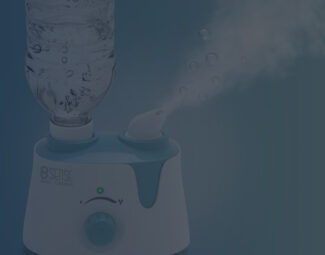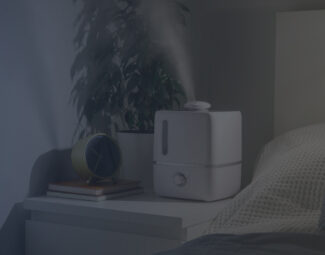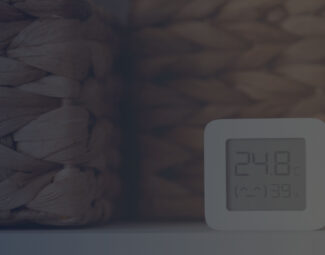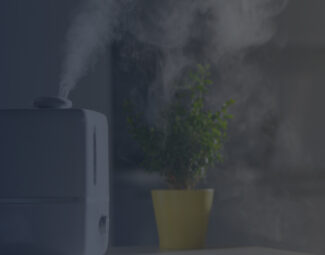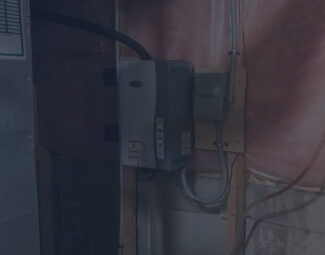F or many households, the need for a humidifier is a reality as comfort and control of health conditions cannot be achieved when the air is dry. Low humidity affects your health directly, what it is known most commonly for causing is a predisposition to catching colds, among other issues.
If you checked indoor humidity with the hygrometer and the level it listed is below the 30% - 40% accepted bar, it is high time that you raise moistness indoors to benefit your health and feel truly comfortable when you are at home. To achieve this, you need a humidifier.
But what should you buy? What makes a certain model better than another? These are questions that you will receive the answer to if you continue with us and read this article. In the following, we will look over some essential aspects to factor in when you buy a humidifier, and list and discuss the important features and options modern systems come with that you should put an accent on when you make your selection too.
For air quality improvement, there is a trifecta of home-use devices that you need to achieve it. Read here about the humidifier, dehumidifier, and air purifier to see how each device factors when it comes to creating a healthier and more comfortable indoor environment.
Which Is Better – Warm or Cool Mist Humidifiers?
Ideally, we would advise that you opt for a combination system like the Crane EE-8065 that lets you pick between warm and cool mist humidification. However, there are not too many products of this kind available, and the ones that do provide both selections might not comply with your other needs, a moment when you will go back to square one – deciding between warm and cool mist.
Let’s break down how each product handles specific tasks and how it scores in certain areas to provide you with a more comprehensive means of comparing to draw a definitive conclusion:
Warm Mist Humidifier |
Cool Mist Humidifier |
|---|---|
Warm mist system overall score: 9.4/10 |
Cool mist system overall score: 9.1/10 |
While according to the overall score, warm mist models would be a preferable choice, the truth of the matter is that this is more of a personal preference issue rather than a performance consideration. Unless you want to use it in the nursery, where it is recommended to opt for a cool-mist model as this type of humidifier is safe around babies, you can go with whatever option of the two you see fit in any other circumstance.
What to Look For in a Humidifier?
- Humidistat: Few humidifiers come with it, true, but if a model that does feature it fits the bill when it comes to what you need in other main interest areas like type and size, it is smart to opt for it. What makes the humidistat crucial is that it makes the humidifier turn on and off as needed to maintain the moisture level you select for it to upkeep indoors.
- UV light: Not a common feature but one that gives extra points to the product as its purpose is to kill microbes in the water. Due to its presence, the water tank will never serve as a growing ground for bacteria, nor will the health-threatening microorganisms be released into the air you breathe via humidification.
- Filter: Some units clean the air in their performance as well, trapping pollutants so that the moisture evicted is sanitary and does not compromise air quality.
- Filter indicator: If the system features a filter, an indicator that lets you know when the moment has come to replace the filter comes in handy. Overlooking this important maintenance task is a major mistake seeing how the filter loses efficiency when it gets clogged with particles and impurities.
- Automatic shut-off: If you tend to forget to refill the tank when you should and you repeat this mishap enough times, the humidifier will eventually burn out and require replacement. This is why it is important to opt for a system that comes with automatic shut-off as, when the tank has run out of water, the feature activates and stops the unit from functioning any further so that it won’t get damaged.
- Water level indicator: Chances are that, at one point or another, you will overlook filling the tank, which causes the unit to stop its functioning as there is no moisture to release. The purpose of the indicator is to visually announce you that the water tank is reaching the depletion point so that you refill it in the nick of time.
- Aromatherapy: Many people prefer humidifiers that allow aromatherapy as this holistic medicine practice benefits the body, mind, and soul. Just add drops of essential oils and the system will release them into the air alongside the moisture-increasing vapors, creating a much more relaxing atmosphere indoors as a result.
- Selectable mist levels: With most systems, you can adjust moisture output so that the air in the room receive what you consider to be the ideal amount of moisture per hour. Through this amplified control over the unit, you can avoid repercussions of high humidity and prevent eventual mold growth and bacteria breeding in the room.
- Technology: Steam or evaporative? Why not ultrasonic, for that matter? Look into how each type works and select the technology that best serves your needs.
What Size Humidifier Do You Need?
This step comes before looking into the features a certain model comes with. You first have to determine what size humidifier you need as this influences the type of system you should acquire as well. Thus, remember – when you shop, first decide what type you need, size it right, and after these steps can you finally start to look into functions and features to make the selection that is right for you.
Will You Use It for a Single Room?
In case you need it for a single room or for 2-3 areas in your home that are rather similar in size and where humidification needs are not dire, you can opt for a more classic system, to say so. There are even models that are specially designed for use in certain rooms, flaunting specific specs when it comes to humidity output, noise level, area coverage, and other aspects, catering to the demands of the space. For your ease, here are some examples:
- Humidifiers for baby rooms: Nursery models generally cover a smaller-size area and their humidity output is leveled to comply with the needs of these rooms. Their noise output is as low as it gets too so that you can leave them on during the night without bothering the baby. Some extra features typical for these humidifiers include nightlights that soothe the baby to sleep, and the ability to diffuse essential oils and vapor drops for medical purposes.
- Humidifiers for large rooms: Whether we are talking about the living room, the master bedroom, or even attic in case you have low humidity in it, opt for a large room model that can cover wider spaces and provides higher mist output so that it stabilizes moisture levels in this more demanding situation.
If you need to use the humidifier in the bedroom or office, rooms where you are best served by a quiet system, then look into our selection of the best ultrasonic humidifiers as the technology these products use to output the moisture-increasing mist ensures operational silence.
Do You Need Whole-House Humidification?
This more special scenario requires a special humidification system as well. There are two categories of systems that you can use to provide moisture increase throughout the house, and these include:
- Whole house humidifiers: Multiple types fall into this category but what they all have in common is a large enough coverage and moisture output to provide humidity increase in all of the rooms in your house. It is preferable to opt for a model that mounts on the warm air supply as there are more efficient.
- Furnace humidifiers: These mount on the return air duct of furnaces and rapidly spread moisture into the air in your home. There are options to suit buildings of all sizes, so you won’t have trouble finding the one you need. Moreover, even though it is a heavy-duty system, it is designed to last for years. Just ensure proper furnace humidifier maintenance and you won’t ever have dry air in any room of the house.
Tips to Get the Most Out of Your Humidifier
Before we come to the inevitable end, let’s see what you can do to maximize the performance and lifespan of the humidification system that you acquire. To get the most from the product, follow the quick tips provided here:
- Change the water every day: Otherwise, the stale water provides proper conditions for mold and bacteria to grow and multiply, being inevitably released into the air you breathe as the humidifier tends to increase moisture.
- Use distilled water: This is a general rule that you should abide by regardless if the system has a filter for the water or not, or whether it uses boiling in the process of producing the moisture or not. Distilled water is free of minerals, so there won’t be deposits accumulating on the basin with time.
- Track RH: Use an indoor hygrometer to keep an eye on moisture levels in the room in case the unit does not feature a humidistat that would have made it stop when your selected RH level was reached. Otherwise, you will inevitably run the system longer than needed, which leads to high humidity indoors. This, in turn, causes mold growth, so if you suffer from allergies and want to stay safe, monitor RH levels at all times.
- Never skip maintenance: While replacing the water daily helps with humidifier maintenance, there is the issue of abiding other cleaning routines as well. With classic-style humidifiers, you are required to clean the humidifier once per week. When it comes to maintenance for furnace humidifiers, on the other hand, which is a much more extensive procedure, expect to clean or do routine maintenance on it once every month or every year, depending on the specific type you have installed.
- Proper placement: Make sure that there are no obstructions in the path of the moisture that it releases. Otherwise, it won’t raise humidity as effectively and dry air might continue to pose an issue.
Final Thoughts
With the guidelines provided here, you are sure to make a proper selection when it comes to the humidifier that you use to amplify air moistness in any room of your house, even the whole house, for that matter. Size it right, look into the technologies and features that matter most for your situation and that would provide extra help, and you will sleep better due to proper humidity, there will be fewer chances for you to catch the flu when the dreaded season comes, and you will prevent dry air health repercussions as well. To wrap it all up, take time when you look for a humidifier, follow the advice provided, and low humidity will never affect you.




